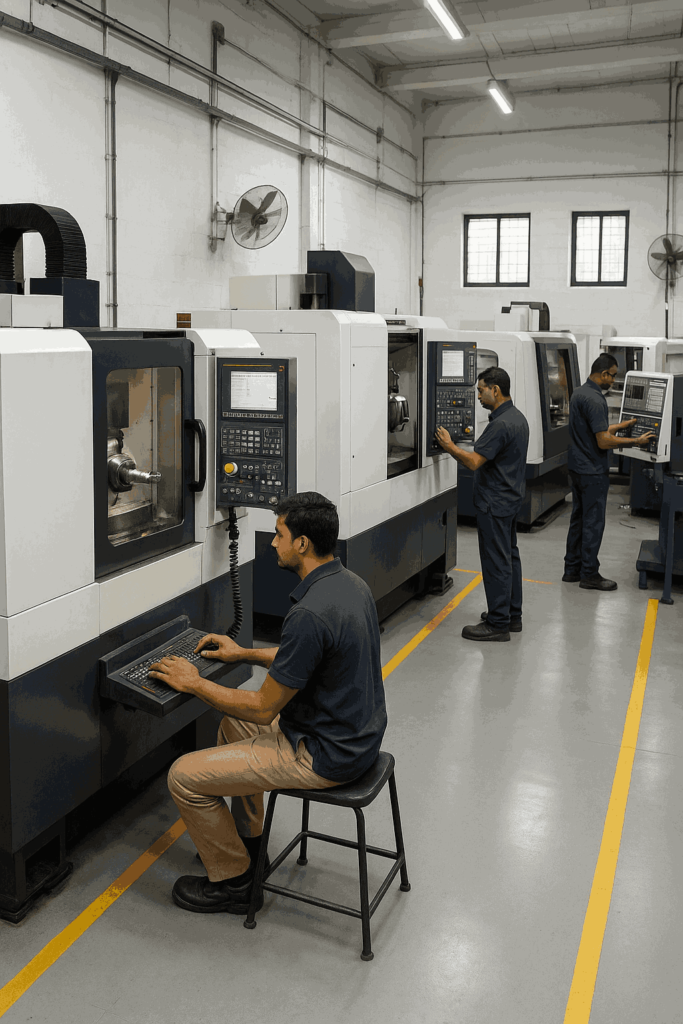
India’s CNC machining sector is expanding rapidly, offering SMEs and exporters precision manufacturing at scale. For digital leaders managing fast product cycles and global expectations, success depends on smart planning, trusted vendors, and innovation-ready setups. Here are actionable tips to grow with CNC precision.
Why CNC Machining Matters More Than Ever
CNC (Computer Numerical Control) machining enables manufacturers, suppliers, and exporters to meet exact specifications quickly. From automotive parts to precision tools, CNC supports batch consistency and complex designs.
India’s CNC machine tools market is expected to grow at over 10 percent CAGR through 2026 (IMARC, 2024). This growth is fueled by automation, rising exports, and demand from global clients for reliable tolerances and clean finishes.
Digital CEOs and operations heads need CNC not only for speed but for credibility in both domestic and international deals.
The Most Common Pain Points
Many growth-focused leaders enter CNC manufacturing only to face delays or mismatches due to:
- Lack of clarity in part drawings
- Misalignment between material expectations and output
- Poor tolerance control in repeat runs
- Limited reporting or inspection protocols
- Vendors who are not digitally responsive
“We once received a batch of components that were slightly off in millimeters. The result? We lost a major packaging client,” shared Ritesh Narula, who runs a trading company in Gujarat.
Tip 1: Start with Precise Design Files
The first step to successful CNC manufacturing is providing clean, detailed, and error-free design documents. Use standard CAD formats and include:
- Material specs
- Tolerance range
- Surface finish expectation
- 2D drawings for critical views
Digital leaders can also set up cloud folders for file sharing to reduce errors and track revisions faster.
Tip 2: Choose the Right Machining Partner
Not all CNC vendors are the same. Choose a partner who:
- Uses modern CNC equipment
- Offers documentation with batch control
- Supports low-volume runs
- Communicates digitally and shares updates
- Provides samples before bulk production
For exporters, verify that the fabricator follows basic international norms, like ISO documentation or RoHS material handling.
Tip 3: Document Every Interaction
CNC is a high-precision process. CEOs and operations managers should:
- Confirm drawings and pricing in writing
- Store revisions in organized folders
- Schedule pre-shipment checks
- Use simple project trackers for milestones
This reduces errors and creates accountability from both sides.
Tip 4: Don’t Ignore Packaging and Handling
Even well-machined parts can fail if they arrive dented, rusted, or mixed up. Work with suppliers who:
- Label batches clearly
- Use rust-prevention packaging
- Ship with dimensional accuracy maintained
Retailers, resellers, and importers rely on that last-mile consistency.
Tip 5: Work with Platforms That Build Trust
Finding reliable CNC partners takes time—especially when scaling into new regions.
Digital-first marketplaces reduce risk by connecting you with verified vendors and offering visibility tools.
One such platform is Pepagora’s precision supplier directory, which enables CEOs, traders, and importers to:
- Find genuine leads without relying on ads
- Showcase parts and services professionally
- Reach international buyers securely
- Build trust without paper-heavy processes
Pepagora’s strength lies in empowering SMEs to grow with global-ready profiles, visibility features, and digital-first integrations that support real results.
Tip 6: Ask for Reports You Can Act On
Modern CNC suppliers should offer:
- Batch reports with deviation summaries
- Photos or short inspection videos
- Packaging confirmation snapshots
“Once we started getting shipment previews, our rework rate dropped by 40 percent,” said Shalini Mehta, head of supply for a Delhi-based importer.
Reporting builds both trust and performance.
Tip 7: Scale with Data, Not Just Volume
As your business grows, use sourcing data to optimize operations. Track:
- Vendor performance timelines
- Unit costs by volume
- Lead time vs. demand patterns
- Repeat issues and successful deliveries
This helps traders, resellers, and providers plan smart inventory and ensure fewer surprises during busy months.
Conclusion
India’s CNC machining ecosystem has matured into a reliable option for digital-first leaders across manufacturing and export. Success in this space depends on clear communication, smart partnerships, and a commitment to precision from drawing to delivery.
With platforms like Pepagora’s CNC vendor network, growth-oriented CEOs, suppliers, and retailers can discover partners who match their ambitions without hidden barriers or risky setups.
Are you ready to make CNC machining your most trusted advantage in business?





































